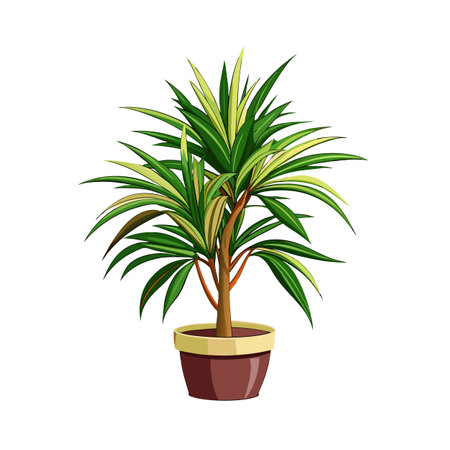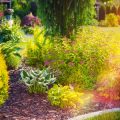1. Understanding U.S. Climate Zones
If youre planning to grow fragrant annual flowers, understanding your local climate is the first step toward success. The United States is divided into several climate zones, known as USDA Plant Hardiness Zones. These zones help gardeners determine which plants are most likely to thrive in their region based on average minimum winter temperatures.
What Are USDA Plant Hardiness Zones?
The USDA (United States Department of Agriculture) created a map that divides the country into 13 main zones, with each zone further split into “a” and “b” subzones. Zone 1 is the coldest and Zone 13 is the warmest. These zones are based on the average annual minimum winter temperature in an area, not the highest temperature or overall climate conditions.
USDA Zones at a Glance
| Zone | Average Minimum Temperature (°F) | Typical U.S. Regions |
|---|---|---|
| 1–3 | -60 to -30 | Northern Alaska |
| 4–5 | -30 to -10 | Northern Midwest, parts of New England |
| 6–7 | -10 to 10 | Mid-Atlantic, Southern Midwest, Pacific Northwest |
| 8–9 | 10 to 30 | Southeast, Southern California, parts of Texas |
| 10–11 | 30 to 50 | South Florida, Southern Texas, Coastal California |
| 12–13 | 50 and above | Tropical Hawaii, Puerto Rico |
How Climate Affects Annual Flower Selection
Your zone plays a big role in determining which fragrant annuals will perform best in your garden. For example, sweet alyssum thrives in cooler climates (Zones 4–7), while lantana loves heat and humidity (Zones 9–11). Knowing your zone can help you pick flowers that will bloom longer and smell stronger throughout the growing season.
Key Climate Considerations for Growing Annuals:
- Temperature: Some annuals prefer cool spring weather; others need consistent warmth.
- Humidity: Certain fragrant flowers do better in dry air, while others enjoy humid environments.
- Rainfall: Drainage and water needs vary by flower type—important for preventing root rot or drought stress.
- Sunlight: Full sun vs. partial shade can impact fragrance intensity and blooming period.
Selecting the right fragrant annuals for your USDA zone ensures healthier plants and a more aromatic garden all season long. In the next section, we’ll explore specific flower options that thrive in different zones across the U.S.
2. Top Fragrant Annuals for Cool and Northern Zones (Zones 3–5)
Gardening in USDA Zones 3 to 5 can be a bit challenging due to shorter growing seasons and cooler summers, but there are still plenty of fragrant annual flowers that thrive in these conditions. These blooms not only tolerate the chill but also fill your garden with delightful scents from late spring through early fall.
Recommended Fragrant Annuals for Cooler Climates
The following annuals are known for their hardiness in northern zones and their ability to produce lovely fragrances even during cool summers.
| Flower | Fragrance Profile | Sun Requirements | Planting Tips |
|---|---|---|---|
| Sweet Alyssum (Lobularia maritima) | Light, honey-like scent | Full sun to partial shade | Sow directly after last frost; prefers well-drained soil |
| Nicotiana (Flowering Tobacco) | Sweet, jasmine-like fragrance in the evening | Full sun to light shade | Start indoors 6-8 weeks before last frost; transplant after danger of frost is gone |
| Heliotrope (Heliotropium arborescens) | Vanilla and cherry pie scent | Full sun | Start indoors early; needs rich, moist soil and consistent watering |
| Dianthus (Annual varieties like ‘Telstar’) | Spicy clove fragrance | Full sun | Tolerates cool temps well; deadhead regularly to encourage blooms |
| Stock (Matthiola incana) | Strong, sweet scent, especially at night | Full sun to partial shade | Sow directly or start indoors; thrives in cool spring weather |
Caring for Fragrant Annuals in Northern Zones
- Start Indoors: Because of the short growing season, its often best to start seeds indoors 6–8 weeks before the last expected frost date.
- Use Raised Beds or Containers: These warm up faster in spring and improve drainage, which helps prevent root rot in cooler soils.
- Add Organic Mulch: Mulching helps retain moisture and regulate soil temperature as the season warms up.
- Pace Your Watering: Northern zones may get regular rainfall, so monitor soil moisture to avoid overwatering.
- Select Early Bloomers: Look for fast-growing varieties or cultivars labeled as “early blooming” to make the most of your shorter season.
By selecting cold-tolerant fragrant annuals and giving them a healthy head start, you can enjoy a beautifully scented garden even in the cooler parts of the U.S. With a little planning and care, these blooms will brighten your outdoor space all summer long.

3. Best Scented Blooms for Temperate and Midwestern Zones (Zones 6–7)
If you live in the heartland of the U.S.—think Ohio, Missouri, Kansas, or Pennsylvania—you’re likely gardening in USDA Zones 6 or 7. These areas enjoy four distinct seasons with moderate to cold winters and warm, humid summers. The good news? This climate supports a wide range of fragrant annual flowers that can thrive from late spring through early fall.
Top Fragrant Annuals for Zones 6–7
These annuals not only handle the seasonal shifts of Midwestern and temperate regions but also bring rich, delightful scents to your garden beds, patios, or window boxes.
| Flower | Scent Profile | Growing Tips |
|---|---|---|
| Sweet Alyssum (Lobularia maritima) | Light, honey-like fragrance | Plant in full sun to partial shade; great for borders and containers |
| Nicotiana (Nicotiana alata) | Strong evening fragrance, sweet and musky | Prefers full sun; plant near porches or windows for nighttime scent enjoyment |
| Heliotrope (Heliotropium arborescens) | Vanilla and cherry-like aroma | Loves sun but appreciates afternoon shade in hot summers; keep soil moist but well-drained |
| Stock (Matthiola incana) | Spicy, clove-like perfume | Thrives in cooler temps; best planted in early spring or late summer for fall blooms |
| Petunia (Petunia x hybrida) – Fragrant Varieties Only | Sugary sweet smell, especially at dusk | Select scented cultivars like Night Sky or Heavenly Blue; full sun is ideal for best blooms and fragrance release |
Caring for Fragrant Annuals in Changing Seasons
The Midwests fluctuating weather means you’ll want to time your planting carefully. Start seeds indoors during late winter or buy young plants from local nurseries after the last frost date. Be sure to:
- Water consistently: Hot summers demand regular watering, especially for container-grown flowers.
- Punch up the scent: Place fragrant flowers near outdoor seating areas or open windows to enjoy their aroma fully.
- Deadhead often: Removing spent blooms encourages more flowering and keeps plants tidy.
- Add mulch: Helps retain moisture and regulate soil temperature throughout the growing season.
Aromatic Pairings That Work Well Together
Create layered scent experiences by mixing different fragrant annuals. For example:
- Nicotiana + Sweet Alyssum: A combo that releases scent all day and into the night.
- Stock + Petunias: Offers both visual appeal and rich fragrance through cool spring evenings.
- Heliotrope + Marigolds (non-fragrant but pest-repelling): A beautiful pairing with added garden benefits.
Pro Tip:
If youre short on space, many of these fragrant annuals do wonderfully in hanging baskets or window boxes—just be sure they get enough sunlight!
This region may have unpredictable weather, but with the right flower choices, your garden can be reliably scented all summer long.
4. Heat-Tolerant Fragrant Flowers for Southern and Southwestern Zones (Zones 8–9)
If you live in the Southern or Southwestern U.S.—think Texas, Arizona, parts of Florida, and Southern California—you know how hot and sunny it can get. These regions fall into USDA hardiness zones 8 to 9, where summer temperatures soar and rainfall can be scarce. Choosing annual flowers that not only survive but thrive in these conditions is key. Luckily, there are several fragrant annuals that love the heat and continue to bloom beautifully through long, sun-drenched days.
Top Heat- and Drought-Tolerant Fragrant Annuals
These flowers are known for their ability to handle intense sun exposure while filling your garden with delightful scents.
| Flower | Fragrance | Sun Requirements | Water Needs |
|---|---|---|---|
| Nicotiana (Flowering Tobacco) | Sweet, especially at night | Full sun to part shade | Moderate; drought-tolerant once established |
| Lantana | Citrusy and spicy | Full sun | Low; very drought-tolerant |
| Heliotrope | Vanilla-like scent | Full sun to part shade | Moderate; keep soil slightly moist |
| Alyssum (Lobularia maritima) | Honey-sweet fragrance | Full sun to part shade | Low to moderate; prefers well-drained soil |
| Marigold (Tagetes) | Pungent herbal scent | Full sun | Low; thrives in dry conditions |
| Moss Rose (Portulaca grandiflora) | Mildly fragrant blooms | Full sun | Very low; excellent for xeriscaping |
Caring Tips for Hot-Climate Annuals
Select the Right Spot:
Choose areas in your yard or containers that receive at least 6–8 hours of sunlight daily. Raised beds or containers with good drainage work well in arid climates.
Mulch for Moisture Retention:
A layer of organic mulch helps keep roots cool and reduces evaporation, which is especially important during peak summer months.
Irrigation Strategy:
Even drought-tolerant plants need water when getting established. Water deeply but less frequently to encourage deep root growth.
Avoid Overfertilizing:
Too much fertilizer can lead to excessive foliage growth with fewer flowers. Use a balanced, slow-release fertilizer once at planting time.
Add Fragrance and Color Without the Fuss
The right annuals can turn even the hottest corners of your garden into fragrant oases. With these easy-care, heat-loving blooms, you’ll enjoy both beauty and aroma all season long—even under the most intense summer sun.
5. Tropical-Loving Annuals for Southern Florida, Hawaii, and Coastal Areas (Zone 10 and above)
If youre gardening in Zone 10 or warmer—think Southern Florida, coastal California, Hawaii, and other frost-free, humid locations—you’ve got the perfect environment for growing lush, fragrant annual flowers year-round. These areas have long growing seasons, warm nights, and high humidity, which many tropical-scented blooms absolutely love.
Top Fragrant Annuals for Warm Coastal Climates
Here are some of the best-scented annual flowers that thrive in hot and humid regions:
| Flower | Fragrance Profile | Sun Requirements | Notes |
|---|---|---|---|
| Nicotiana (Flowering Tobacco) | Sweet and spicy evening scent | Full sun to partial shade | Best fragrance after sunset; attracts moths |
| Tuberose (Polianthes tuberosa) | Intensely sweet and exotic | Full sun | Ideal for cut flower arrangements; very fragrant at night |
| Ageratum (Floss Flower) | Mildly sweet aroma | Full sun to part shade | Great for borders and containers; deer resistant |
| Heliotrope (Heliotropium arborescens) | Vanilla-cherry scent | Full sun to part shade | Loved by pollinators; consistent bloomer in heat |
| Cestrum nocturnum (Night-Blooming Jasmine) | Pungent sweet fragrance at night | Partial to full sun | Tropical favorite; intense nighttime fragrance fills the air |
| Alyssum (Lobularia maritima) | Honey-like scent | Full sun to part shade | Grows well in coastal gardens; good as ground cover or edging plant |
Caring Tips for Tropical Annuals
- Water regularly: Humid climates still require consistent watering, especially in sandy soils common in coastal areas.
- Avoid over-fertilizing: Too much fertilizer can lead to lush foliage but fewer blooms and less fragrance.
- Pest watch: Warm climates can mean more pests. Keep an eye out for aphids and whiteflies.
- Deadhead often: Removing spent flowers encourages continuous blooming and maintains strong scent production.
Create a Scented Paradise Year-Round
The beauty of living in Zone 10 or warmer is the ability to grow these fragrant flowers throughout the year. Mix bold tropicals with delicate bloomers to enjoy layers of scent all season long. Whether youre planting along walkways, near patios, or in containers on balconies, these annuals will bring irresistible aromas right to your doorstep.
6. Tips for Maximizing Fragrance and Health in Annual Flowers
To get the most delightful scents and vibrant blooms from your fragrant annual flowers, proper care is essential—no matter what U.S. climate zone youre gardening in. Here are some easy-to-follow tips that will help you grow healthy, aromatic annuals all season long.
Choose the Right Location
Most fragrant annuals need full sun (at least 6 hours of direct sunlight daily) to produce their best scent and blooms. Be sure to check each plant’s specific needs. In hotter zones like 9-11, consider providing light afternoon shade to prevent stress during peak heat.
Site Selection Guide by Climate Zone
| USDA Zone | Sunlight Needs | Additional Notes |
|---|---|---|
| Zones 3–5 | Full Sun | Ensure good drainage and consider raised beds to warm soil faster in spring. |
| Zones 6–8 | Full Sun to Partial Shade | Avoid spots with strong afternoon sun for delicate-scented varieties. |
| Zones 9–11 | Morning Sun, Afternoon Shade | Choose east-facing locations and mulch well to retain moisture. |
Prune Regularly for Healthy Growth
Deadheading, or removing spent flowers, encourages more blooms and maintains a neat appearance. For larger varieties like Nicotiana or sweet peas, pinch back the growing tips early in the season to promote bushier growth and more blossoms.
Feed for Fragrance and Blooms
Fragrant flowers often need a little nutritional boost to keep producing scent-rich blooms:
Fertilizer Tips by Flower Type
| Flower Type | Recommended Fertilizer | Frequency |
|---|---|---|
| Scented Geraniums | Balanced (10-10-10) | Every 4–6 weeks during growing season |
| Sweet Alyssum & Petunias | Bloom Booster (low nitrogen) | Bi-weekly with liquid feed or monthly slow-release granules |
| Nicotiana & Heliotrope | Lighter feeding, organic compost preferred | Once at planting, then mid-season top-up if needed |
Watering Wisely Across Zones
Avoid overwatering, which can reduce fragrance and lead to root rot. Instead, water early in the day and focus on deep, infrequent watering to encourage strong root systems. In humid climates (like parts of Zone 8–11), space plants well to improve airflow and prevent mildew.
Add Mulch for Moisture and Temperature Control
A 2-3 inch layer of organic mulch helps regulate soil temperature, retain moisture, and suppress weeds—all of which support healthier, more fragrant blooms.
Protect from Pests Naturally
Aphids and whiteflies can damage fragrant flowers quickly. Use insecticidal soap or introduce beneficial insects like ladybugs as a natural defense. Keep an eye out for leaf discoloration or stunted growth as early warning signs.
Quick Care Summary Table for All Zones:
| Caring Task | Best Practice for Fragrant Annuals |
|---|---|
| Light Requirements | Full sun preferred; adjust per zone needs |
| Watering Schedule | Deep watering once or twice per week; allow topsoil to dry slightly between sessions |
| Fertilization Frequency | Bimonthly with flower-friendly fertilizer or organic compost top-up mid-season |
| Pest Management | Use natural methods first; monitor plants weekly for signs of pests |
Caring for your fragrant annuals doesnt have to be complicated—just follow these simple guidelines, and youll enjoy beautiful blooms filled with sweet scents no matter where you live in the U.S.


